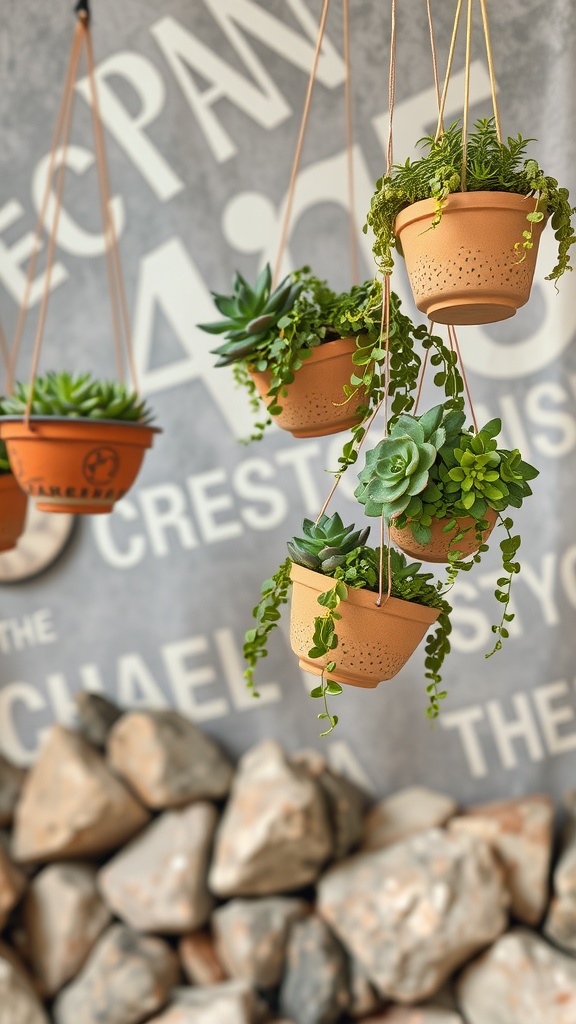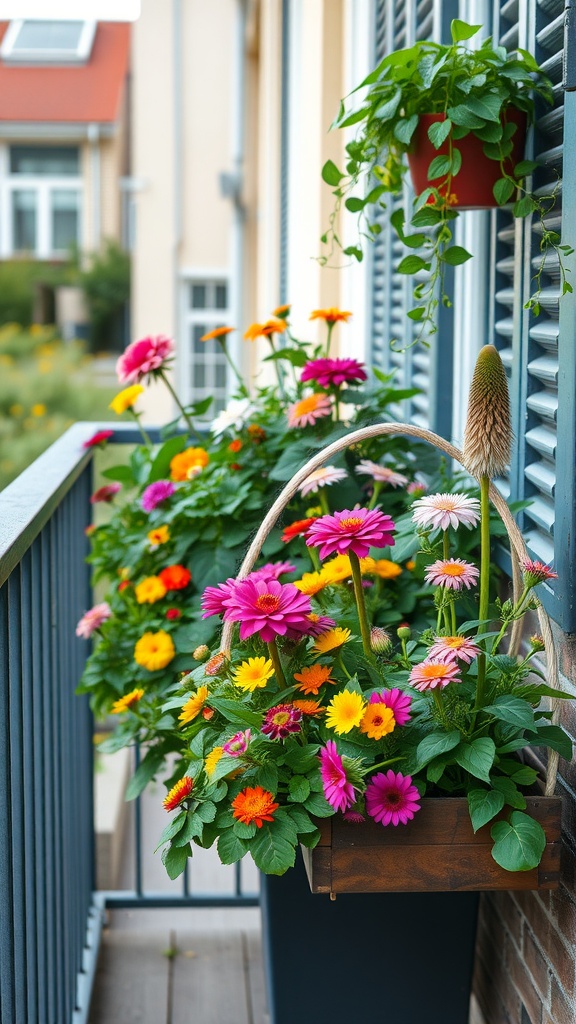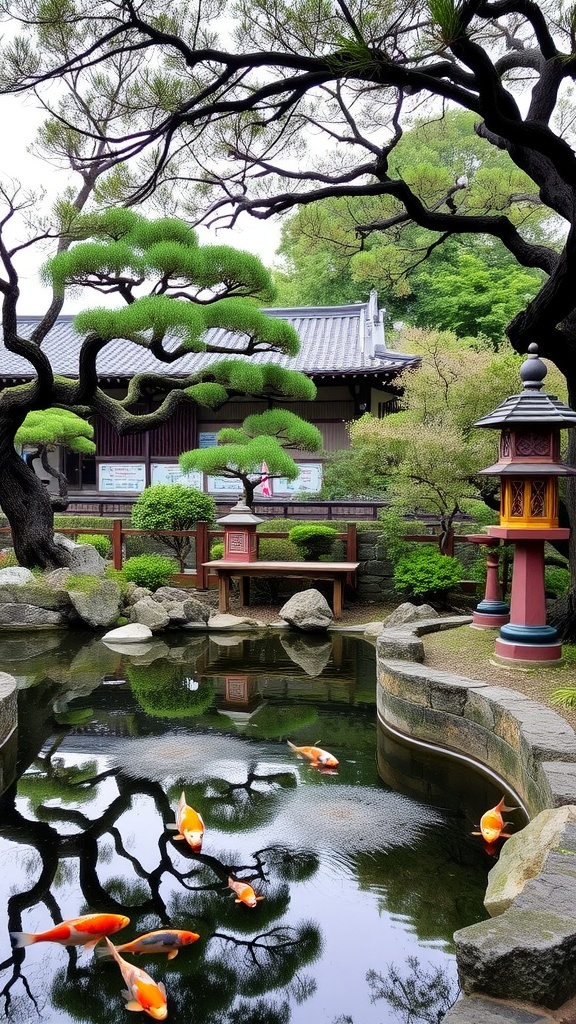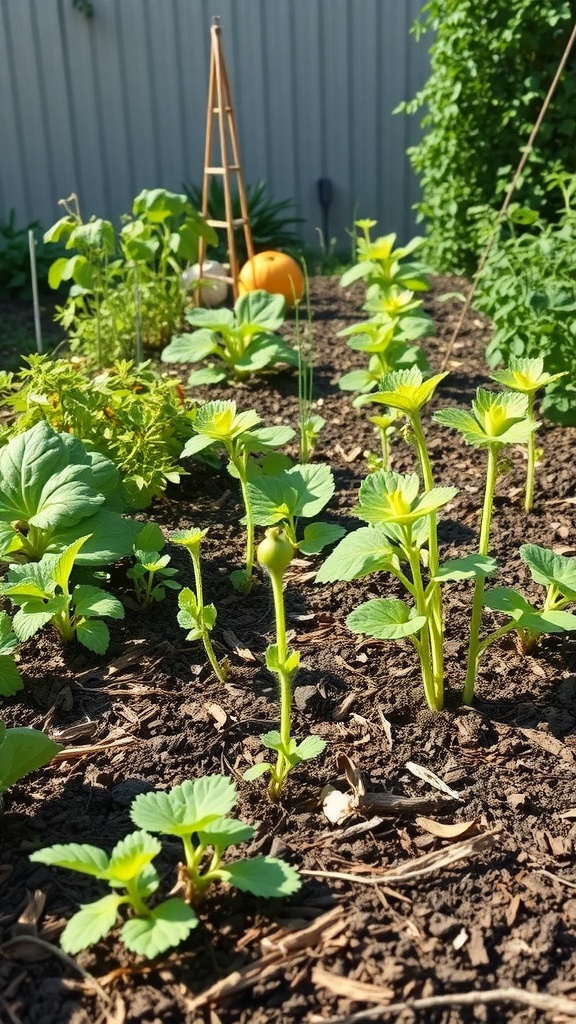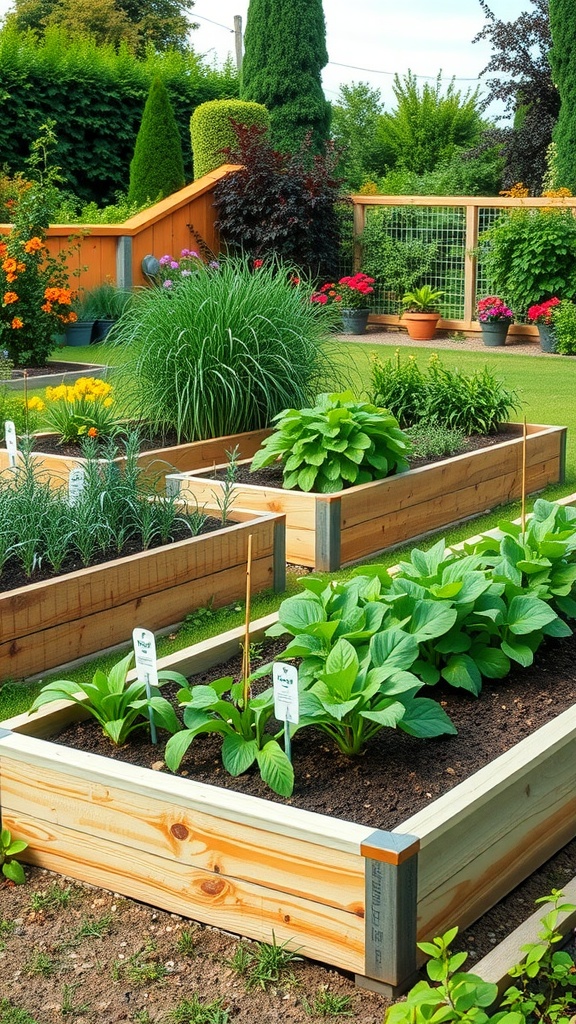When it comes to transforming the look of your garden, flower bed edging is one of the simplest yet most impactful elements you can add. Not only does it create clean lines and separation between your flowers and lawn, but it can also enhance your garden’s overall aesthetic. Whether you’re aiming for a rustic, modern, or traditional look, there are endless ways to edge your flower beds with style. In this post, we will explore 21 creative flower bed edging ideas that can instantly elevate your outdoor space.
1. Brick Flower Bed Edging

Brick edging is a classic, timeless choice that adds a structured and neat look to your flower beds. Its warm, earthy tones provide a rustic charm that blends seamlessly with almost any garden style. You can use traditional red bricks or go for a more modern look with sleek, neutral-toned bricks. The best part about brick edging is its versatility; you can arrange the bricks in a single row for a low-profile edge or stack them for a higher, more dramatic look.
Bricks are durable and weather-resistant, making them a great long-term solution. To install, simply dig a trench along the perimeter of your flower bed, and then lay the bricks in place. If you’re looking to add a little more flair, consider using bricks with decorative patterns or designs. This edging also helps prevent soil erosion, keeping your flower beds intact through heavy rain.
2. Stone Flower Bed Edging

If you want a natural, organic look, stone edging is the perfect option. Stones come in various shapes, sizes, and colors, so you can customize the look to match your garden’s personality. Whether you go for smooth river stones, rough-edged boulders, or small cobblestones, stone edging offers a rugged, earthy aesthetic that complements a variety of plants.
Stone flower bed edging works well for creating a rustic or Mediterranean vibe in your garden. To install, arrange the stones in a row along your flower bed, ensuring they’re level and stable. You can even mix and match different types of stones for added texture and visual interest. This option is particularly ideal for uneven or sloped areas, as the stones can help prevent soil from washing away.
3. Wooden Logs Edging

Wooden logs create a charming, rustic effect in your flower beds. They bring a natural, earthy look to your garden that is perfect for country-inspired or woodland-themed spaces. You can use whole logs, cut pieces of wood, or even reclaimed wood for a more eco-friendly option. Wooden log edging is great for creating low-maintenance, natural boundaries around your flower beds.
To install, simply place the logs around the edge of your flower bed. For a more rustic look, leave the logs in their natural state, or you can treat them with wood preservative to help them last longer. This edging idea pairs well with wildflower beds, or gardens filled with native plants, as it helps enhance the natural beauty of your outdoor space.
4. Metal Flower Bed Edging

For a sleek, modern garden, metal flower bed edging can make a bold statement. Materials like steel, aluminum, or corten steel are durable, weather-resistant, and provide a clean, minimalist look that enhances any contemporary garden. Metal edging works especially well for creating defined lines in modern garden designs, and it’s an excellent choice if you’re looking to add a bit of sophistication to your outdoor space.
Corten steel, in particular, is a great option for flower beds because it develops a unique rusted patina over time, giving it an aged, industrial look. To install, simply cut the metal strips to the desired length and stake them into the ground. The smooth, curved edge of metal creates a seamless transition between your flowers and the surrounding lawn or garden path.
5. Plastic Edging
Source
Plastic flower bed edging is a budget-friendly option that’s both practical and easy to install. While it may not offer the same aesthetic appeal as more natural materials like stone or wood, plastic edging is highly functional and perfect for gardeners who want a low-maintenance solution. Available in a variety of colors and styles, you can find plastic edging that mimics the look of wood or stone.
Plastic edging is particularly beneficial for keeping grass and weeds from creeping into your flower beds. Installation is simple—just dig a trench along the bed’s edge and insert the plastic edging. This solution is also lightweight, making it a great option for those looking to add a clean, defined edge without heavy lifting.
6. Concrete Flower Bed Edging
Source
Concrete flower bed edging provides a solid, long-lasting option for defining the borders of your garden. It’s perfect for homeowners who want a sturdy, permanent edging solution. Concrete is versatile and can be molded into various shapes and sizes, allowing you to create custom designs that fit your flower bed perfectly. Whether you choose poured concrete or precast concrete blocks, this material offers a sleek, modern look.
Concrete is highly durable and can withstand extreme weather conditions, making it ideal for flower beds that are exposed to the elements. To install, you can either pour concrete into a trench or lay precast concrete blocks along the edge of your flower bed. For added customization, you can stain or paint the concrete to match the rest of your garden decor.
7. Pavers Flower Bed Edging
Source
Pavers are another fantastic option for flower bed edging, as they combine the durability of stone with the versatility of design. Available in a wide range of colors, shapes, and textures, pavers allow you to create a unique look that complements your garden’s style. Whether you opt for rectangular, square, or circular pavers, they create a defined, organized boundary for your flower beds.
Pavers work especially well for flower beds that are part of larger outdoor spaces, as they blend seamlessly with walkways, patios, or driveways. To install, simply lay the pavers in a row around the edge of your flower bed, ensuring they’re level and secure. You can also use pavers to create interesting patterns or designs that add visual appeal to your garden’s edge.
8. Gravel Flower Bed Edging
Source
For a soft, natural look, gravel is an excellent option for flower bed edging. Gravel provides a porous, free-flowing boundary that can help with water drainage and prevent soil from washing away. It also complements almost any garden style, whether you’re creating a zen garden or a rustic wildflower bed.
Gravel edging is simple to install—just lay down a landscaping fabric to prevent weeds, then spread the gravel along the edge of your flower bed. You can choose from various types of gravel, such as pea gravel, crushed stone, or river rock, depending on the look you want to achieve. Gravel edging also works well for informal or contemporary garden designs, creating a relaxed, low-maintenance vibe.
9. Terracotta Flower Bed Edging
Source
Terracotta is a wonderful option for flower bed edging if you’re looking to add a touch of Mediterranean charm to your garden. This material is perfect for creating a warm, earthy boundary that contrasts beautifully with the vibrant colors of your flowers. Terracotta pots, tiles, or bricks can all be used to create a cohesive and elegant edge for your flower beds.
Terracotta’s warm tones bring a sense of rustic elegance, while its durability ensures that it will last for years. To create your terracotta edging, simply arrange the pots or bricks around your flower bed. You can even plant herbs or small flowers in the pots to add extra charm and functionality to your garden’s edge.
10. Rope Flower Bed Edging
Source
For a coastal or nautical-inspired garden, rope edging can add a unique and charming touch to your flower beds. Rope is a simple yet effective material that can be wrapped around the perimeter of your flower bed to create a soft, flowing border. It works especially well for gardens near water features, such as ponds, streams, or coastal-themed spaces.
Rope is also highly versatile and can be used in a variety of ways—whether you choose thick nautical rope or thin garden twine, it can be wrapped, knotted, or woven to fit your design. To install, simply coil the rope around the edge of your flower bed, securing it with stakes or clips to keep it in place. This option is particularly ideal for those looking to add a touch of texture and whimsy to their garden.
11. Cedar Planks Flower Bed Edging
Source
Cedar planks offer a natural, rustic look that’s perfect for flower bed edging, particularly in cottage or country garden settings. Cedar is a durable wood that naturally resists decay, making it an excellent choice for outdoor use. The warm, reddish tones of cedar planks create a cozy, inviting atmosphere in your garden, making it a great option for creating soft, organic boundaries around your flowers.
To install cedar planks, simply cut the wood to the desired length and stake it into the ground. You can use the planks in a single row for a low-profile border or stack them for a taller, more substantial edge. Cedar planks work beautifully when paired with natural stone or other earthy materials to create a harmonious and rustic look.
12. River Rock Flower Bed Edging
Source
River rocks offer a natural, smooth finish that complements many garden styles, particularly those that aim to bring a sense of tranquility and peace. These smooth stones, typically available in various shades of gray, tan, and brown, create a sophisticated yet understated border for your flower beds. Their rounded edges provide a more organic, fluid look compared to rough stones or bricks.
River rock is perfect for creating a relaxed, coastal, or Zen garden aesthetic, helping to soften the lines between flower beds and surrounding spaces. To install, you can arrange the rocks in a single layer along the flower bed’s edge or stack them slightly for added height. River rocks also promote good drainage, making them an excellent choice for areas with heavy rainfall or for flower beds with moisture-loving plants.
13. Reclaimed Wood Edging
Source
Reclaimed wood is a fantastic way to add character and sustainability to your garden. This option offers a rustic, eco-friendly alternative to traditional wood, giving your flower beds a charming, weathered look. Whether you use old wooden pallets, salvaged fence posts, or timber from a previous project, reclaimed wood has a unique history that can lend character and authenticity to your garden.
The beauty of reclaimed wood is its versatility—it can be cut, stacked, or arranged in a variety of ways to fit the size and shape of your flower beds. You can opt for a low-profile edging by simply laying the wood flat or create a more elevated border by stacking the pieces. This eco-conscious option pairs well with wildflower gardens, rustic landscapes, and natural settings.
14. Plastic Lumber Edging
Source
Plastic lumber is a modern alternative to traditional wood edging, offering the same look and feel as real wood but with added durability and weather resistance. Made from recycled materials, this edging solution is both environmentally friendly and highly durable. It’s available in various colors and textures, allowing you to customize the look to suit your garden’s aesthetic.
Plastic lumber is incredibly low-maintenance, requiring little upkeep compared to natural wood, which can rot or fade over time. Installation is straightforward, as the pieces are lightweight and easy to handle. Plastic lumber works well for contemporary or minimalist gardens and is particularly effective for maintaining clean, defined lines without the risk of warping or splintering over time.
15. Ceramic Flower Bed Edging
Source
Ceramic edging is an elegant choice for those looking to add a touch of sophistication to their flower beds. Ceramic tiles, bricks, or pottery can create a decorative yet durable border around your flowers, elevating the overall aesthetic of your garden. The glossy or matte finish of ceramic pieces gives a refined, polished look, making it ideal for formal or Mediterranean-inspired gardens.
You can mix and match various colors and patterns of ceramic tiles to create unique designs along the edge of your flower bed. Ceramic edging is particularly suitable for gardens with a lot of greenery or flowers, as it offers a clean contrast that helps your plants stand out. To install, simply arrange the ceramic pieces along the bed’s perimeter and secure them with a strong adhesive or mortar.
16. Concrete Block Edging
Source
Concrete block edging is a great option for those seeking a sturdy and affordable way to define their flower beds. Concrete blocks are widely available, easy to work with, and provide a modern, industrial look that can be dressed up with paint or left in their natural state. Their versatile shape and size make them suitable for a range of garden designs, from contemporary to rustic.
The benefits of concrete blocks are numerous—they are durable, weather-resistant, and can be used to create both low-profile and taller borders. To install, simply arrange the blocks around your flower bed and secure them with mortar or landscape adhesive. Concrete block edging also allows you to incorporate other design elements, such as adding gravel or plants between the blocks for added texture.
17. Slate Flower Bed Edging
Source
For a sleek, modern, and natural option, slate stone offers a refined way to edge your flower beds. Slate comes in beautiful shades of gray, blue, and black, making it a great choice for contemporary gardens or those seeking a more sophisticated, neutral aesthetic. Its natural cleft texture adds depth and interest, creating an elegant border that contrasts beautifully with colorful blooms.
Slate edging is particularly effective in gardens with minimalist designs or in combination with other natural materials like gravel or wood. To install, arrange the slate pieces tightly together or space them slightly apart for a more organic look. The smooth yet textured surface of slate creates a subtle contrast that enhances your flower bed’s overall design.
18. Hedge Flower Bed Edging
Source
Hedges provide a natural and living alternative to traditional flower bed edging. Whether you choose low-growing boxwoods, lavender, or even dwarf shrubs, hedges create a soft, green boundary that blends seamlessly with your garden. This option works well for larger flower beds or garden borders, as it adds structure and greenery while offering privacy and a sense of enclosure.
To maintain the neat appearance of a hedge border, regular trimming is necessary to keep the plants at the desired height and shape. Hedges also offer the added benefit of creating habitats for beneficial insects and birds, making them an eco-friendly choice for those interested in sustainable gardening practices.
19. Gravel and Timber Edging
Source
Combining gravel and timber creates a rustic and functional flower bed edging that is perfect for gardens that aim for an earthy, natural look. The timber adds warmth and texture, while the gravel provides excellent drainage and keeps the soil in place. This combination works well in gardens with a relaxed, country-style vibe or in combination with a variety of flowers and shrubs.
To create this edging, lay a row of timber planks or logs around the flower bed’s edge, then fill the area with gravel. You can also add a layer of landscaping fabric beneath the gravel to prevent weeds from growing. This hybrid edging solution combines the best of both worlds—wood’s aesthetic appeal and gravel’s practical benefits.
20. Gabion Basket Edging
Source
Gabion baskets are a bold, modern choice for flower bed edging that brings an industrial flair to your garden. These wire cages, typically filled with rocks or stones, offer a sturdy, visually interesting boundary that’s perfect for contemporary or urban gardens. Gabions provide both structure and texture, creating a unique contrast between the soft greenery of your flowers and the hard, industrial elements of the baskets.
Gabion baskets are not only visually striking but also durable and long-lasting. To install, simply arrange the wire baskets along the flower bed and fill them with stones, gravel, or even recycled materials. This edgy look works particularly well in gardens with a modern or industrial theme, offering a strong visual element that draws attention.
21. Bamboo Flower Bed Edging
Source
Bamboo edging offers a light, flexible, and eco-friendly way to define your flower beds. The slender stalks of bamboo create a natural, tropical vibe that works well in gardens with an Asian or Zen-inspired theme. Bamboo is also a highly sustainable material, making it a great choice for eco-conscious gardeners.
This edging option is lightweight and easy to install—simply stake the bamboo in place around your flower bed. You can leave it as-is for a simple, natural look or stain it for added richness and longevity. Bamboo edging is ideal for creating borders that flow with the natural contours of the landscape, adding a serene and calming touch to your garden.
Conclusion
Flower bed edging is a simple yet transformative way to add structure, style, and functionality to your garden. Whether you prefer natural materials like stone and wood or modern options like metal and concrete, there are endless possibilities to suit any garden aesthetic. From the classic appeal of brick and stone to the eco-friendly charm of bamboo and reclaimed wood, these 21 flower bed edging ideas offer something for every type of outdoor space.
No matter which style you choose, the key is to ensure that your flower bed edging complements the overall theme of your garden and provides the functionality you need. With the right edging, you can create a beautiful, defined space that enhances the beauty of your flowers and transforms your outdoor living area into a serene and inviting retreat.
